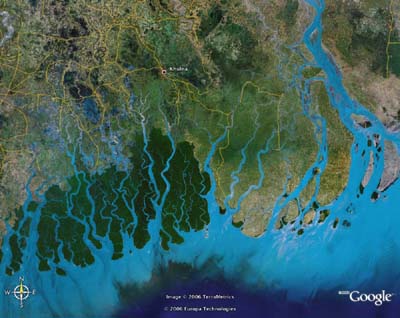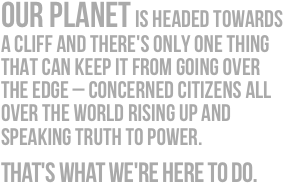
[images from BBC]
by Nathan Thanki and Graham Reeder
Given that we’re now experiencing another summer of bizarre weather events, including deadly heat waves, wildfires, and storms in the US, and increased chances of another El Nino year, many in the US are finally opening their eyes to what scientists have been telling them for years: climate change is real, but not only that, it is happening now. Climate change is no longer a theoretical danger, it is a tangible phenomenon that is striking worldwide. Perhaps the greatest tragedy of climate change lies in the fact that it affects first and foremost the world’s most vulnerable people, usually those who have done the least to cause climate change.
Hopefully that knowledge will lead us to conclude that adaptation to climate change is something that should be developed, studied, and supported with finance, technology, and capacity. Depending on the resilience of a community, people will adapt to climate change when driven to in a variety of different ways. This is why it is important to support adaptation proactively, not as a last minute band-aid solution. Building strong and resilient communities that are informed about and prepared for the challenges they will face is the only way to avoid catastrophe when the challenges of climate change hit; this became all too clear in the US during Hurricane Katrina, when careless and underfunded disaster management led to tragedy on a totally unnecessary scale.
From that we should probably conclude that adaptation to climate change is something that should be developed, studied, and supported with finance, technology, and capacity. But if one looks into the history of the concept of adaptation, we see that not everyone has reached such obvious conclusions. Initially it seemed that to prioritise adaptation was 'defeatist' – a sort of acceptance that climate change was happening already which would allow big emitters to say "well hang about, it's already happening and it aint so bad, let's keep going here." For years the fight was meant to be on how to stop these emitters from business as usual: the mitigation battle. It turns out that mitigation can be a money spinner for some, and as the carbon markets and their various complexities were born and grew up into the evil bastard children they now are (just google REDD+ human rights violations for a whole litany of errors), the adaptation element was banished to more obscure corners of academia and activism. There is good work being done on adaptation, but it has largely been done in universities and scientific agencies or with smaller NGOs. The most high profile adaptation planning is done by developed world governments who are investing in their own adaptation planning and implementation, while doing very little at the multilateral level beyond giving encouraging words of support to those doing further research.
In Durban everyone was interested in the Green Climate Fund. One of the big demands from civil society was that this new tool in the already cluttered climate finance toolbox would address the adaptation gap by specifying that at least 50% of funds should be for adaptation projects. Closing the “adaptation gap” has long been a priority of developing countries, and in the discussions surrounding the GCF it was clear that it had become a priority for much of civil society too. For good reason: the report from the GEF to the Conference shows that some $3 billion have been doled out for mitigation projects, compared to a measly $300 million for adaptation.
Read more…




